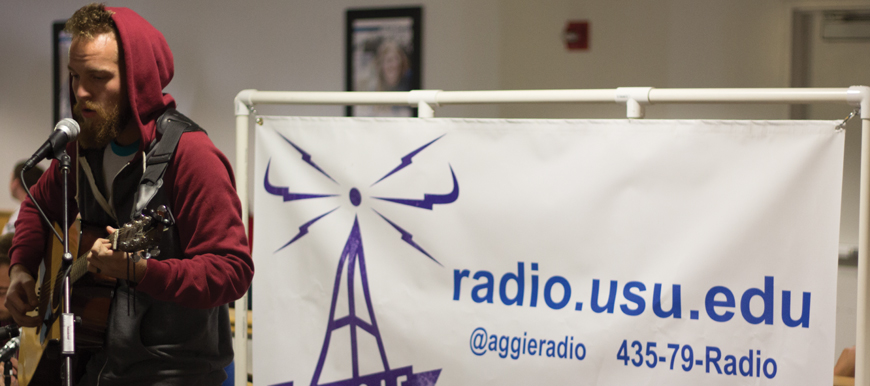Aggie Radio wins FM bid
Listening to Utah State University’s student radio station is about to get much easier.
On Sept. 15, the Federal Communications Commission, or FCC, granted Aggie Radio permission to become an FM station. That means the station now has its own frequency — 92.3 FM — and will be broadcasting to the Utah State campus and its surrounding cities in a little over a year.
“Our goal is spring semester 2015,” said Cody Scott, the Aggie Radio station manager.“But there’s a lot of work to do.”
Utah Public Radio, the other radio station on campus, will allow Aggie Radio to use its tower to broadcast. One challenge Aggie Radio will face is finding a way to put a transmitter on the tower and connect it to the current establishment in the Taggart Student Center. The process could be expensive.
“It’s not going to be cheap to go FM, but it’s going to be worth it,” Scott said.
The station will use fundraisers as one method of earning the money for the transition. Scott said Logan City Limits, the station’s annual spring concert, might become one of these fundraisers.
They will also look to local businesses for the money, which means there will be more advertisements and sponsorships on Aggie Radio.
“It will start to sound more like a commercial station,” Scott said.
Nate Laursen, the Aggie Radio adviser, said they will spend more time training their deejays because, like all FM stations, they will be held to the standards of the FCC.
“They’re going to learn what it is to run a real radio station,” Laursen said.
Aggie Radio used to be a free-format radio station, meaning students could sign up for a time slot, play their own music and talk about almost any subject. However, that will change when Aggie Radio converts to FM.
“Right now, we still give deejays quite a bit of creative control over their shows but when we go FM, we won’t be able to do that,” Scott said. “It’ll be the board of directors and the advisers that decide what gets played.”
Although some content will change, Aggie Radio will become a better-quality station, Laursen said.
He said the deejays will “have the opportunity to plan a little more and have a higher quality of show content.”
Scott predicted Aggie Radio will gain many more listeners. He said students will be more likely to listen to the station if they can listen to it on a radio rather than online.
“The main thing I would hear as I talked to students about Aggie Radio is, ‘How can I listen?’” Scott said. “Now that we can say, ‘Oh, tune your radio to 92.3,’ then that’s going to be huge for exposure for us.”
Laursen said the Utah State community will be drawn to the station because it is designed specifically for them.
“Students and community up here will now have their own station to represent them and be their voice,” Laursen said.
Now is the time to join Aggie Radio, Scott said.
“I think a lot of people will be interested in joining Aggie Radio once we do go FM, but we’re going to pull from the people we have trained at that time,” Scott said. “If they want to get involved, now’s the time.”
Last year’s Aggie Radio directors applied for the FM building license in October 2013. Laursen said he is glad their hard work paid off.
“It was not easy,” Laursen said. “It had its stresses. There were a lot of people saying how hard it is to do, but we stuck with it.”
Scott said he thinks students are excited for the transition.
“I think us at Aggie Radio are anxious about the switch and being able to make it, but excited as well. It means a lot,” he said.
-melmo12@gmail.com

